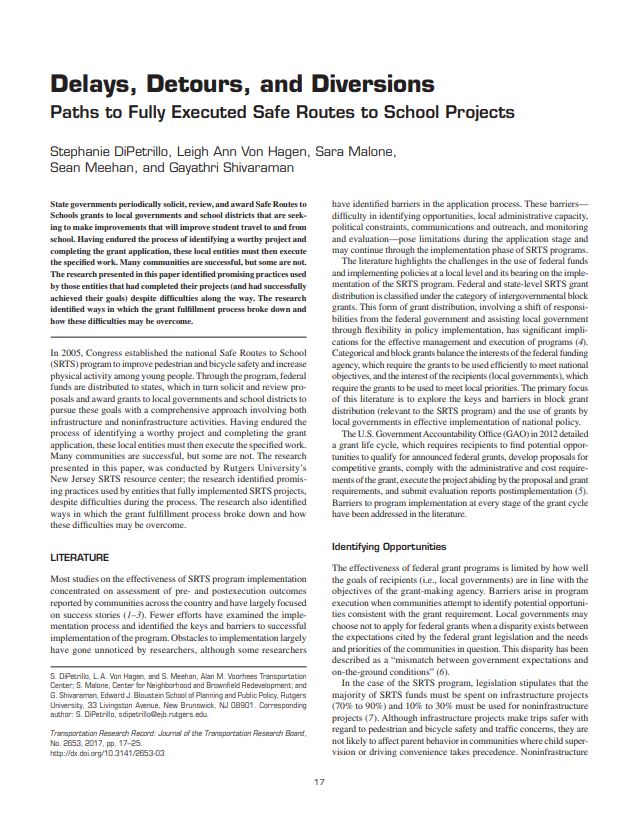Abstract
State governments periodically solicit, review, and award Safe Routes to Schools grants to local governments and school districts that are seeking to make improvements that will improve student travel to and from school. Having endured the process of identifying a worthy project and completing the grant application, these local entities must then execute the specified work. Many communities are successful, but some are not. The research presented in this paper identified promising practices used by those entities that had completed their projects (and had successfully achieved their goals) despite difficulties along the way. The research identified ways in which the grant fulfillment process broke down and how these difficulties may be overcome.
